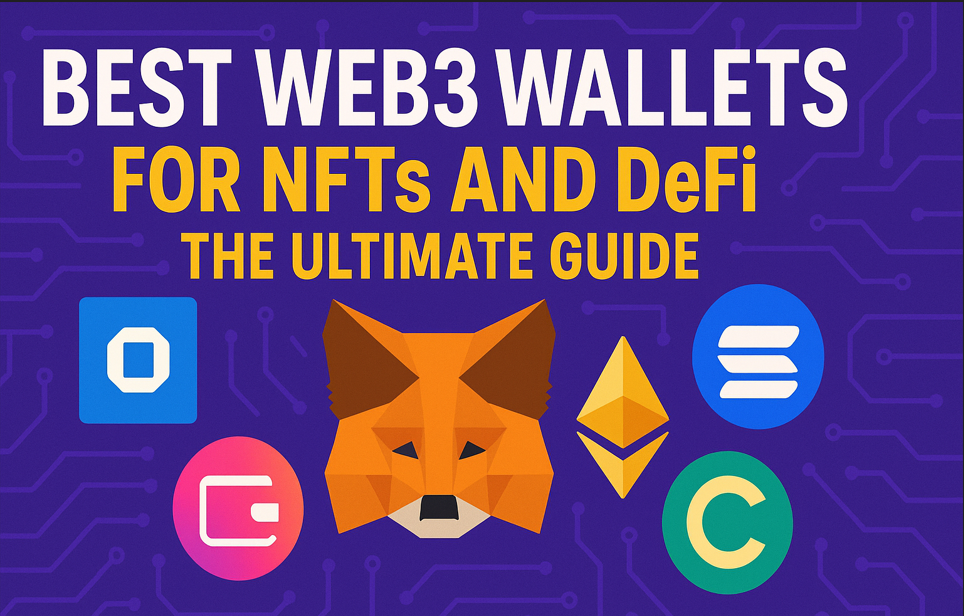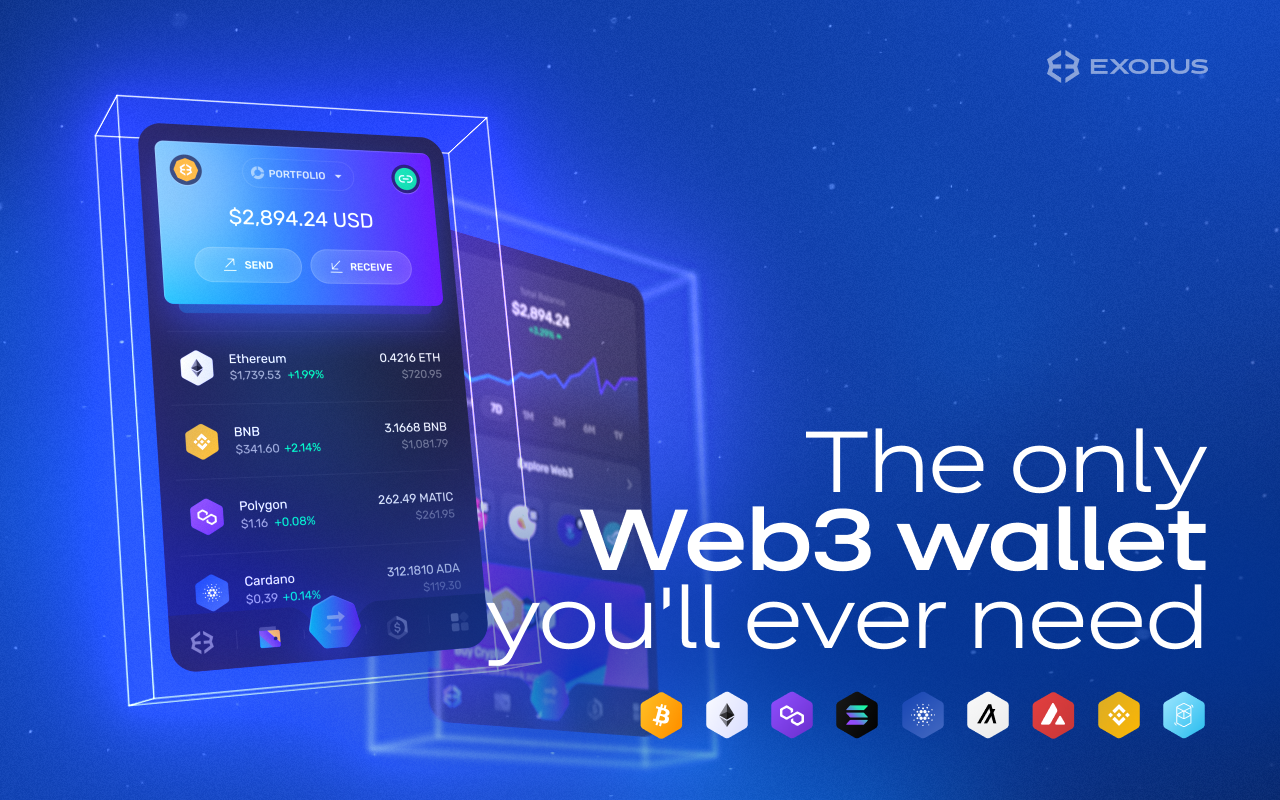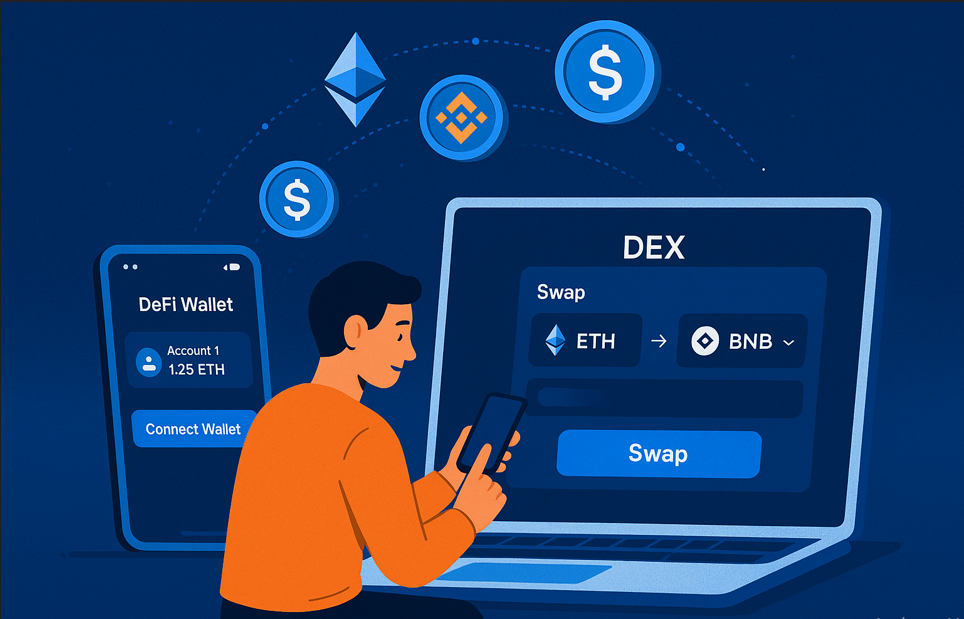Best Web3 Wallets for NFTs and DeFi: The Ultimate Guide
Why Web3 Wallets Are Essential for NFTs and DeFi
The world of cryptocurrency is far more than just a way to make transactions; it’s a gateway to decentralized finance (DeFi) and digital art, especially through NFTs (Non-Fungible Tokens). As blockchain technology continues to evolve, these innovations are reshaping how we interact with money, art, and assets. To fully engage in these emerging sectors, you can’t rely on a traditional cryptocurrency wallet—what you need is a Web3 wallet.
Unlike typical wallets, Web3 wallets are designed to seamlessly connect with decentralized applications (dApps), enabling users to manage assets across various blockchain networks, trade in NFTs, and participate in DeFi protocols. Given the rapid growth and variety of Web3 wallets available today, choosing the right one can be overwhelming. That’s where this guide comes in. We’re here to walk you through the best Web3 wallets for NFTs and DeFi, comparing key features, security, transaction fees, and everything else that matters when selecting a wallet for your digital assets.
What is a Web3 Wallet?

In essence, a Web3 wallet is a digital wallet that provides users with a secure and decentralized way to manage cryptocurrency, NFTs, and DeFi activities. But unlike traditional wallets that simply store funds, Web3 wallets are designed for interacting with the decentralized web.
These wallets let you manage a wide array of digital assets, including cryptocurrencies like Ethereum (ETH), Binance Coin (BNB), and various tokens (such as ERC-20 tokens). They also enable you to store, view, and trade NFTs (ERC-721 tokens) and connect with DeFi platforms to access lending, borrowing, staking, and yield farming opportunities.
Crucially, Web3 wallets give you full control over your private keys, ensuring your data and funds are stored securely, unlike traditional exchanges where your funds might be controlled by a third party.
Why Choosing the Right Web3 Wallet Matters

When diving into NFTs and DeFi, your wallet isn’t just a storage solution—it’s the key to accessing a world of opportunities. The right Web3 wallet will allow you to manage and interact with both your NFTs and DeFi investments securely, all while offering a smooth user experience.
For NFT collectors, a wallet with excellent NFT display capabilities and compatibility with leading marketplaces like OpenSea is essential. For DeFi enthusiasts, seamless integration with decentralized exchanges (DEXs), liquidity pools, and yield farming platforms is paramount.
But security also cannot be overlooked—if your wallet doesn’t have strong encryption and private key control, your assets are vulnerable. In this guide, we’ve reviewed the best Web3 wallets on the market today for both NFTs and DeFi to ensure you’re making the best choice for your needs.
Read More: What is a DeFi Wallet and How Does It Work for Beginners?
Top 5 Web3 Wallets for DeFi and NFTs
1. MetaMask
MetaMask is arguably the most popular Web3 wallet, especially in the NFT and DeFi space. It’s available as both a browser extension and mobile app, making it accessible to a wide range of users. MetaMask seamlessly integrates with Ethereum-based dApps and is the go-to wallet for NFT collectors and DeFi enthusiasts alike.
Key Features:
-
Cross-Chain Support: While it’s best known for its Ethereum support, MetaMask also supports other blockchain networks like Binance Smart Chain and Polygon.
-
NFT Management: You can store, manage, and view your NFTs directly within MetaMask, giving you a centralized platform for your assets.
-
DeFi Integration: MetaMask integrates effortlessly with DeFi platforms like Uniswap, Aave, and Compound, enabling easy participation in decentralized finance.
-
Customizable Gas Fees: MetaMask gives users full control over transaction fees, allowing for faster transactions when needed, or lower-cost options when gas fees are high.
Security:
MetaMask is a non-custodial wallet, which means only you have control over your private keys. This is crucial for security and privacy. It also offers strong encryption to protect your wallet, and the ability to back up your wallet with a recovery phrase.
Transaction Fees:
The fees depend on the blockchain network you’re interacting with. Ethereum-based transactions can incur high gas fees, especially when the network is congested, but MetaMask allows users to adjust gas prices to optimize transaction costs.
Pros:
-
Extremely user-friendly
-
Excellent for both DeFi and NFTs
-
Cross-chain functionality
Cons:
-
Ethereum gas fees can be expensive
-
Limited support for non-Ethereum-based NFTs
2. Trust Wallet
Trust Wallet is a multi-currency, mobile-first Web3 wallet that supports a huge range of assets, making it one of the most flexible wallets in the space. Whether you’re a beginner or a seasoned crypto enthusiast, Trust Wallet’s clean interface and wide support make it a solid choice for NFT collectors and DeFi users alike.
Key Features:
-
Multi-Asset Support: Trust Wallet supports over 1 million assets, including ERC-20, BEP-2, and BEP-20 tokens, and is compatible with numerous blockchain networks.
-
DeFi Access: It integrates with popular DeFi platforms like PancakeSwap, allowing users to trade, stake, and engage in liquidity pools.
-
NFT Management: Trust Wallet lets you manage and display your NFTs across a range of blockchains, including Ethereum and Binance Smart Chain.
-
dApp Browser: Built-in dApp browser allows you to directly interact with decentralized applications, providing easy access to DeFi services.
Security:
Trust Wallet is a non-custodial wallet, so only you control your private keys. It also offers biometric authentication for added protection, which is a great bonus for mobile users.
Transaction Fees:
Trust Wallet doesn’t charge any fees for storing your crypto, but you will need to pay the network fees associated with transactions, which can vary depending on the blockchain.
Pros:
-
Support for a wide range of tokens and assets
-
No storage fees
-
Mobile-first, easy-to-use interface
Cons:
-
Limited desktop support
-
May have a steeper learning curve for beginners
3. Coinbase Wallet
If you’re already part of the Coinbase ecosystem, Coinbase Wallet is a natural extension for your Web3 needs. It’s easy to use and offers seamless integration with the Coinbase exchange, making it ideal for beginners who want to explore NFTs and DeFi without diving too deep into complex crypto concepts.
Key Features:
-
Beginner-Friendly Interface: Coinbase Wallet is designed for ease of use, with a simple, intuitive layout.
-
NFT Marketplace Access: You can buy, sell, and manage NFTs on platforms like OpenSea and Rarible directly from Coinbase Wallet.
-
DeFi Integration: Easily connect with DeFi platforms such as Uniswap, MakerDAO, and Compound to explore lending, borrowing, and trading.
-
Security: Like most Web3 wallets, Coinbase Wallet is non-custodial and gives you control over your private keys.
Security:
Coinbase Wallet encrypts your private keys and allows for secure backups with a recovery phrase. Its user-friendly design makes it great for beginners but doesn’t compromise on security.
Transaction Fees:
Coinbase Wallet charges the same gas fees as the blockchain network you’re interacting with (Ethereum gas fees can be high), and Coinbase exchange users can transfer assets to the wallet with zero fees.
Pros:
-
Great for beginners
-
Strong integration with Coinbase exchange
-
Excellent for both DeFi and NFT enthusiasts
Cons:
-
Limited blockchain support compared to other wallets
-
Gas fees on Ethereum can be high
4. Rainbow Wallet
Rainbow Wallet is perfect for Ethereum-based NFT collectors. It offers a visually appealing interface that makes managing and displaying NFTs a breeze. If you’re heavily involved in the Ethereum ecosystem and want a wallet that prioritizes aesthetics and user experience, Rainbow is the wallet for you.
Key Features:
-
NFT-Focused Interface: Rainbow Wallet allows you to easily store, manage, and display your Ethereum-based NFTs in a beautiful, gallery-style view.
-
Seamless DeFi Integration: It connects with Ethereum-based DeFi platforms like Uniswap, MakerDAO, and Compound, allowing for easy DeFi interaction.
-
Ethereum-Only: Rainbow Wallet is designed for Ethereum and Ethereum-based assets, such as ERC-20 tokens and NFTs.
Security:
Rainbow is a non-custodial wallet, giving you full control of your private keys. It also uses strong encryption and a secure recovery phrase.
Transaction Fees:
Ethereum-based transactions incur gas fees, which vary depending on network congestion.
Pros:
-
Stunning user interface
-
Perfect for Ethereum-based assets and NFTs
-
Simple and easy-to-use
Cons:
-
Limited to Ethereum and Ethereum-based assets
-
Lacks multi-chain support
5. Argent
Argent is a Web3 wallet designed specifically for DeFi users, offering features like social recovery and gas-free transactions for certain DeFi activities. It simplifies the DeFi experience and provides powerful features that make interacting with DeFi protocols easy.
Key Features:
-
DeFi-Focused: Argent integrates seamlessly with DeFi platforms like Compound, Aave, and MakerDAO for lending, yield farming, and more.
-
NFT Support: While not as extensive as other wallets, Argent does support Ethereum-based NFTs.
-
Social Recovery: Instead of using a seed phrase, Argent allows you to recover your wallet with the help of trusted contacts, simplifying the process.
-
Gas Fee Coverage: For certain DeFi actions, Argent covers the transaction (gas) fees, which is a major plus for frequent DeFi users.
Security:
Argent offers advanced security features, including biometric authentication and social recovery, ensuring both ease of use and high protection. It also uses strong encryption for private keys.
Transaction Fees:
While Argent covers gas fees for some DeFi transactions, users are still responsible for standard transfer fees depending on the Ethereum network.
Pros:
-
Excellent for DeFi users
-
Social recovery for easy wallet access
-
No gas fees for specific DeFi actions
Cons:
-
Limited to Ethereum and Layer 2 networks
-
NFT support isn’t as comprehensive as other wallets
Read More: What is a Web3 Wallet? How Web3 Wallets Have Changed in 2025
Step-by-Step Guide on How to Store Your NFTs in Your Web3 Wallet

Storing your NFTs securely is a vital step for any collector. Here’s a simple guide to help you store your NFTs in your Web3 wallet.
1. Choose Your Wallet
Pick a Web3 wallet that supports NFTs. For example, MetaMask and Trust Wallet offer seamless integration with NFT platforms like OpenSea, Rarible, and more.
2. Connect Your Wallet to an NFT Marketplace
-
Go to your chosen NFT marketplace (like OpenSea).
-
Connect your Web3 wallet by clicking the “Connect Wallet” option.
-
Select your wallet provider and confirm the connection.
3. Purchase or Receive an NFT
After connecting your wallet, browse the NFT marketplace and purchase an NFT of your choice. The NFT will automatically be sent to your wallet after the transaction is completed.
4. View Your NFT in Your Wallet
-
Open your Web3 wallet and navigate to the “NFT” section (if available).
-
You should see your newly purchased NFT listed there.
-
If not, you may need to refresh or check under a different tab, such as “Assets” or “Tokens.”
5. Backup Your Wallet
Make sure you back up your wallet’s recovery phrase. This is essential to recover your NFTs and assets in case you lose access to your wallet.
Step-by-Step Guide on How to Use Web3 Wallets for DeFi Activities

DeFi opens up a world of decentralized financial services that can be accessed through Web3 wallets. Here’s how you can use your wallet for DeFi activities:
1. Connect Your Wallet to a DeFi Platform
-
Go to a DeFi platform like Uniswap, Aave, or Compound.
-
Click on “Connect Wallet” and choose your Web3 wallet provider.
-
Confirm the connection on your wallet interface.
2. Deposit Assets into the Platform
-
After connecting your wallet, navigate to the “Deposit” or “Supply” section of the platform.
-
Select the cryptocurrency or token you wish to deposit into the platform (e.g., Ethereum, DAI).
-
Enter the amount, confirm the transaction, and pay the gas fee if applicable.
3. Engage in DeFi Activities
-
Depending on the platform, you can now participate in lending, borrowing, staking, or yield farming.
-
For example, on Uniswap, you can trade tokens; on Aave, you can lend or borrow assets for interest.
4. Withdraw Assets
-
To withdraw your assets, go to the “Withdraw” or “Redeem” section of the platform.
-
Select the assets you wish to withdraw, confirm the amount, and authorize the transaction in your wallet.
5. Monitor Your Assets
-
Regularly monitor your DeFi activities through the platform’s interface or directly in your Web3 wallet.
-
Make sure to track your returns and ensure your assets are working as intended.
How to Choose the Best Web3 Wallet for Your Needs

Choosing the right Web3 wallet depends on your specific use case. Whether you’re diving into NFTs, exploring DeFi, or managing both, here’s what to consider when making your decision:
-
Security: Always choose a wallet that offers strong encryption, secure backup options, and private key control.
-
DeFi Access: For DeFi enthusiasts, pick a wallet that integrates with your favorite DeFi platforms and offers low transaction fees.
-
NFT Support: If NFTs are your primary interest, ensure the wallet offers good NFT management and viewing options.
-
Transaction Fees: Be mindful of the fees associated with each wallet, especially Ethereum-based transactions, which can get expensive during times of network congestion.
-
User Experience: Choose a wallet that matches your level of expertise, whether you’re a beginner or an advanced user.
FAQ
Q1: Can I use a Web3 wallet for both NFTs and DeFi?
Yes, many Web3 wallets support both NFTs and DeFi. However, some are more specialized for one or the other, so it’s essential to pick one based on your main activities.
Q2: Are Web3 wallets safe to use?
Web3 wallets are generally safe, but security is ultimately in your hands. Always back up your private keys and use two-factor authentication for added protection.
Q3: How do transaction fees work in Web3 wallets?
Transaction fees, also called gas fees, vary based on the blockchain network you’re using. Ethereum-based transactions tend to have higher fees, especially during network congestion.
Conclusion
When it comes to managing your digital assets, whether it’s NFTs or DeFi, choosing the right Web3 wallet is essential for security, usability, and access to the best features. From MetaMask’s robust cross-chain support to Trust Wallet’s mobile-first approach and Argent’s focus on DeFi, each wallet has its strengths and caters to different user needs. By considering your preferences for transaction fees, user interface, and specific features like NFT support or DeFi integration, you can select a wallet that ensures a seamless and secure experience in the world of decentralized finance and digital collectibles.
Discover more from Dipprofit
Subscribe to get the latest posts sent to your email.



